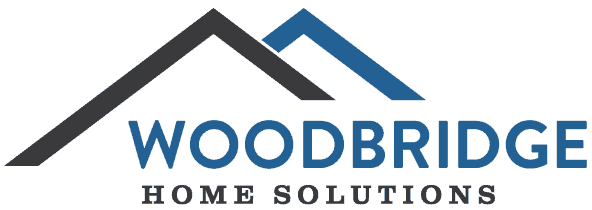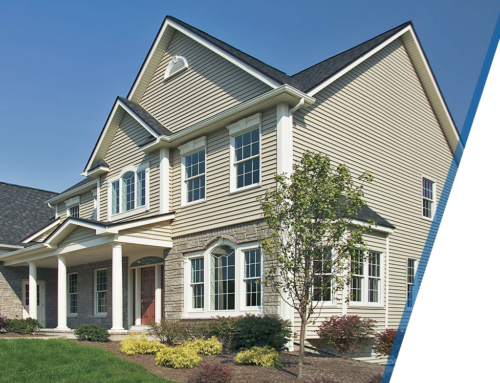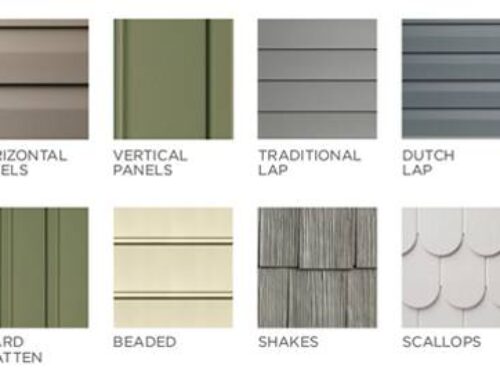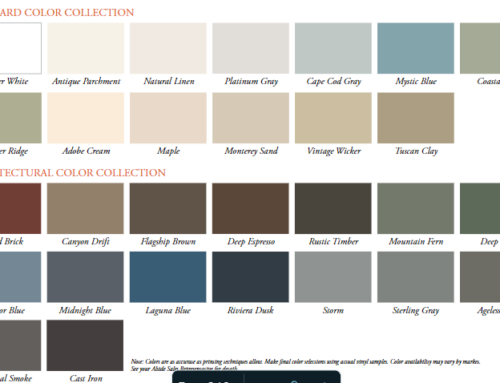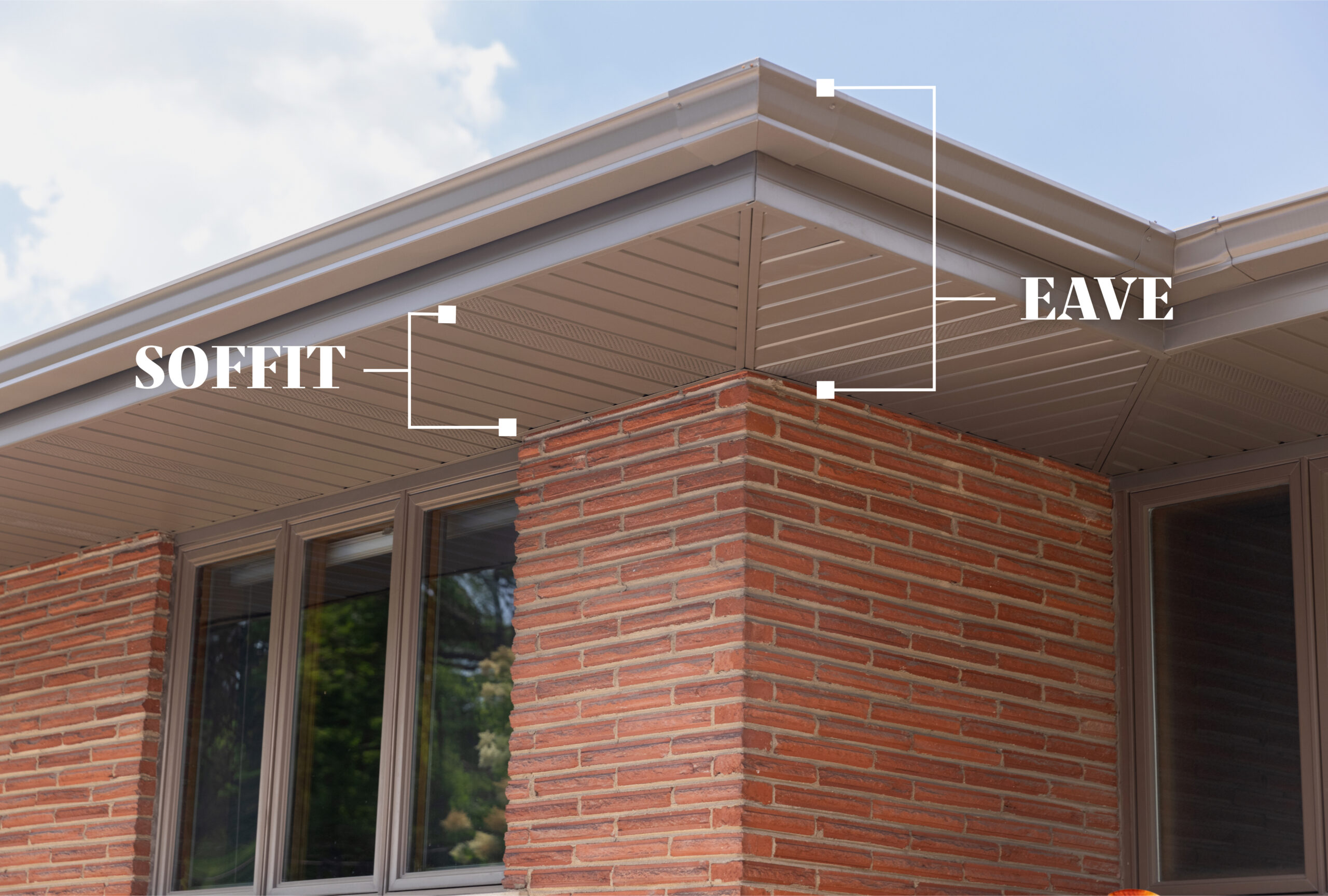
Contents
Contents
Eaves vs Soffits: How Are the Two Different?
When considering repairs and updates to your roofing system, you discover that there are lots of components involved. Eaves and soffits are part of the roof. Both are key to keeping your home snug and dry. Read on to find out how. If you’d like to get started today with repairing your roof, contact Woodbridge Home Solutions now!
How Eaves Work
Simply put, eaves refer to everything on your roof that juts out past the exterior wall. They include the gutter, the fascia, and the soffit. The edge of the roof helps protect the house from sun, rain, and other weather. Different types of eaves exist:
Open Eaves (Exposed Eaves)
In open eaves, the underside of the roof overhang is exposed, or “open.” Boards that join the eaves to the exterior wall run parallel to the roofline. Open eaves are popular in midcentury modern homes because of the sleek lines and streamlined look they provide. However, there are downsides to open eaves. Rodents and other small animals have easier access to your attic. Open eaves are also more vulnerable in harsh weather conditions.
Closed Eaves
In a close eave, the soffit runs parallel to the ground, closing the triangle formed by the eave and the exterior wall. This gives your home a trim, finished look. Besides aesthetics, there are other benefits to closed eaves. They provide an added layer of protection between the inside of your home and the elements. It’s harder for pests to enter your attic. And with modern soffits, air circulation is not impeded.
Boxed Eaves
Boxed eaves are basically closed eaves that have been boxed in to hide the rafters. They’re common in older homes, like colonials and tudors. In terms of functionality, they are the same as closed eaves.
At Woodbridge Home Solutions, we feel that closed eaves are the best choice for homes in the area. They provide the best protection against harsh weather and pests, and they enhance your home’s exterior.
How Soffits Work
Soffits are part of the eave. They are the horizontal boards that enclose the space between the edge of the eave and the exterior wall. Generally, soffits aren’t very visible unless you’re standing underneath them. When properly installed, soffits play a key role in keeping your home comfortable and safe:
- They keep moisture out of your attic space.
- Holes or slits in the soffits ensure proper air circulation in your attic. Airflow helps prevent heat buildup, which leads to increased HVAC costs, better energy efficiency, and lower fire risk.
- They stop pests from entering and nesting in your attic.
Why Are Eaves and Soffits Important?
It’s difficult to overstate the importance of eaves and soffits in keeping your home protected. Properly installed eaves and soffits provide the following benefits:
Proper Air Circulation
As you know, heat rises. In a home, that means that hot air goes to the attic. And if that hot air gets trapped, it could result in higher cooling costs for you. In extreme cases, it could end up in a house fire. Adequate soffit ventilation allows for hot air to escape.
Those soffit and roof vents have another benefit. In case of rain and humid weather, they stop moisture buildup inside the attic of your house. Moisture can lead to water damage, mold, and rot, so it’s important to keep your attic dry.
Pest Control
If a pest sets up a nest in your attic, it can lead to unsanitary conditions in your home. Mouse droppings can be hazardous to human health. Not only that, but pests might infiltrate the rest of your house through the attic. So it’s important to make sure that they don’t have a way in. When properly installed and maintained, soffits stop pests from entering your home. They create a seal between your home and the outside. Bats, mice, and squirrels don’t have a way in.
How Do You Know When It’s Time for New Eaves and Soffits?
When considering replacement eaves and soffits, it’s best not to wait until disaster strikes. Below are signs that your house might need them:
- The paint is flaking: Flaking paint is usually the first sign that the moisture barrier between your home and the outside is starting to break down.
- Your gutters aren’t working properly: If you notice your gutters dripping where they shouldn’t be, that means that they are no longer draining as designed. Your eaves, soffits, or fascias might be warped.
- Your soffits or fascia are showing damage: If you’ve noticed discoloration, warping, or areas that have broken off, your home is no longer protected.
Acting in a timely manner can help prevent major damage to your home, including:
- Infestations: Once bugs and pests are in your attic, getting them out can be difficult and expensive. They can also do major damage to your home.
- Dry rot and roof rot: Without proper ventilation, your home’s supporting beams might become susceptible to rot, a major structural issue.
- Mold: When not addressed, mold can negatively affect your health. Once it’s established, it’s also very difficult to get rid of.
At Woodbridge Home Solutions, we use the best materials to protect your home from the elements. We’re also experts at ensuring your home has fantastic curb appeal. Call us today for a free consultation!

